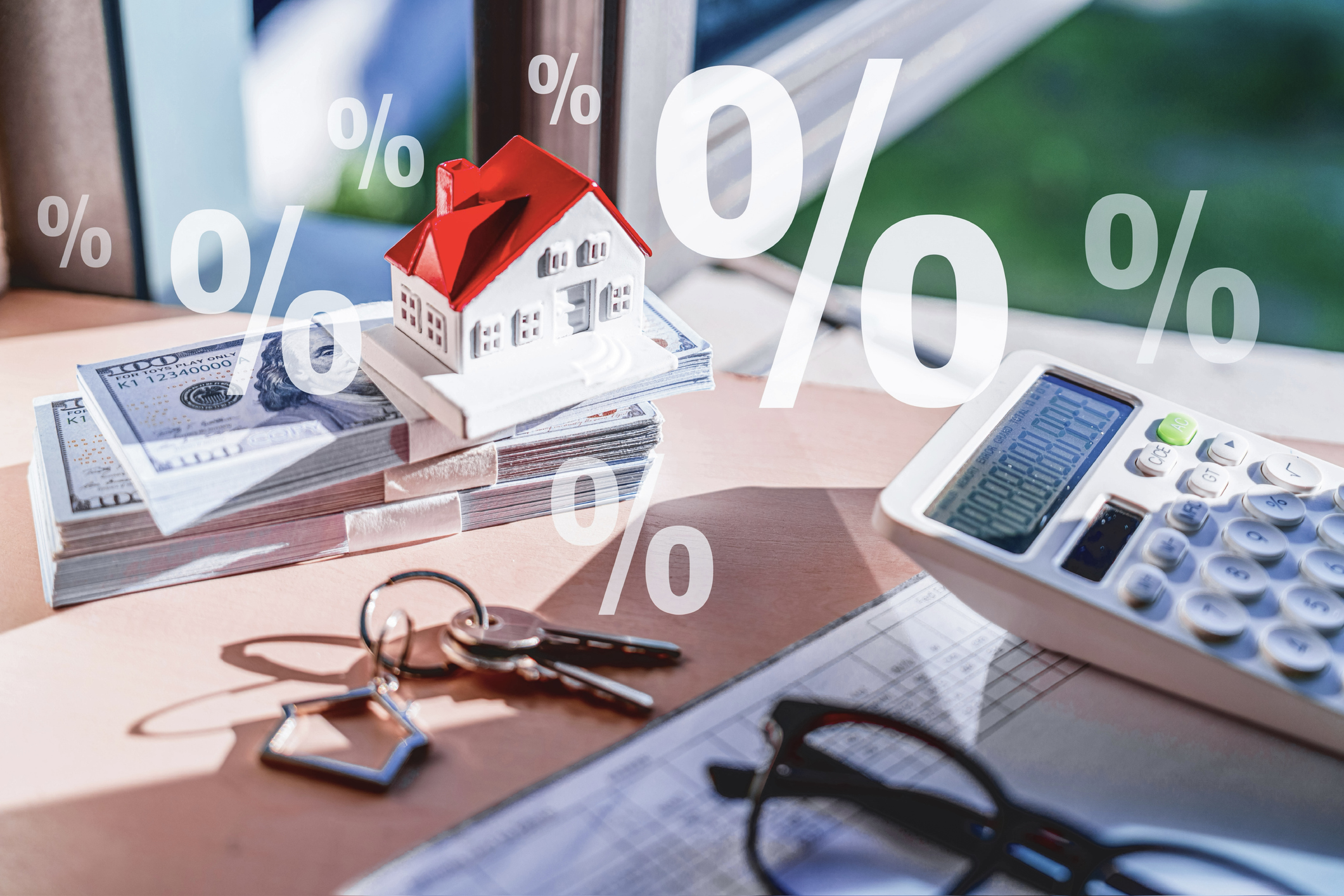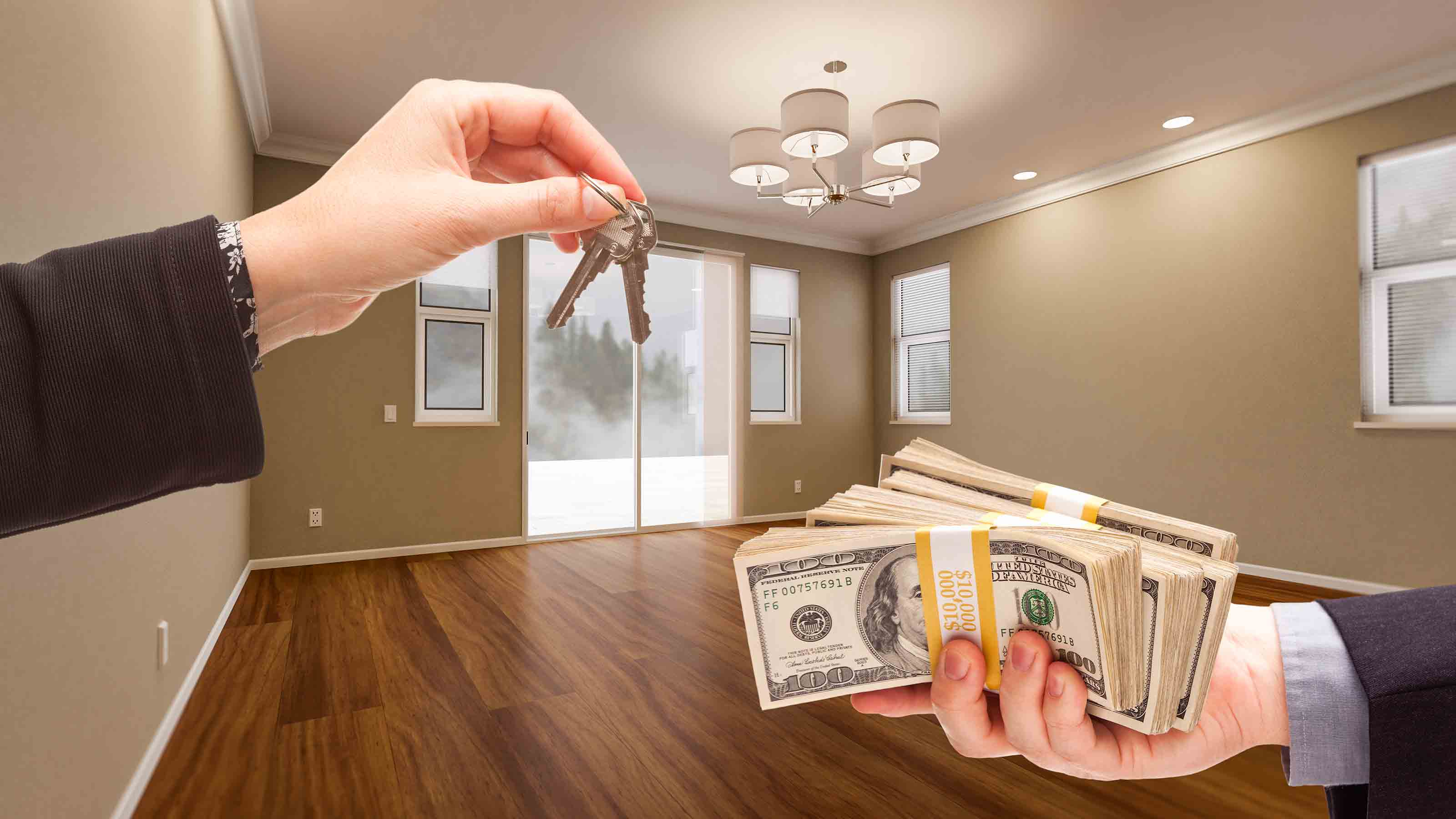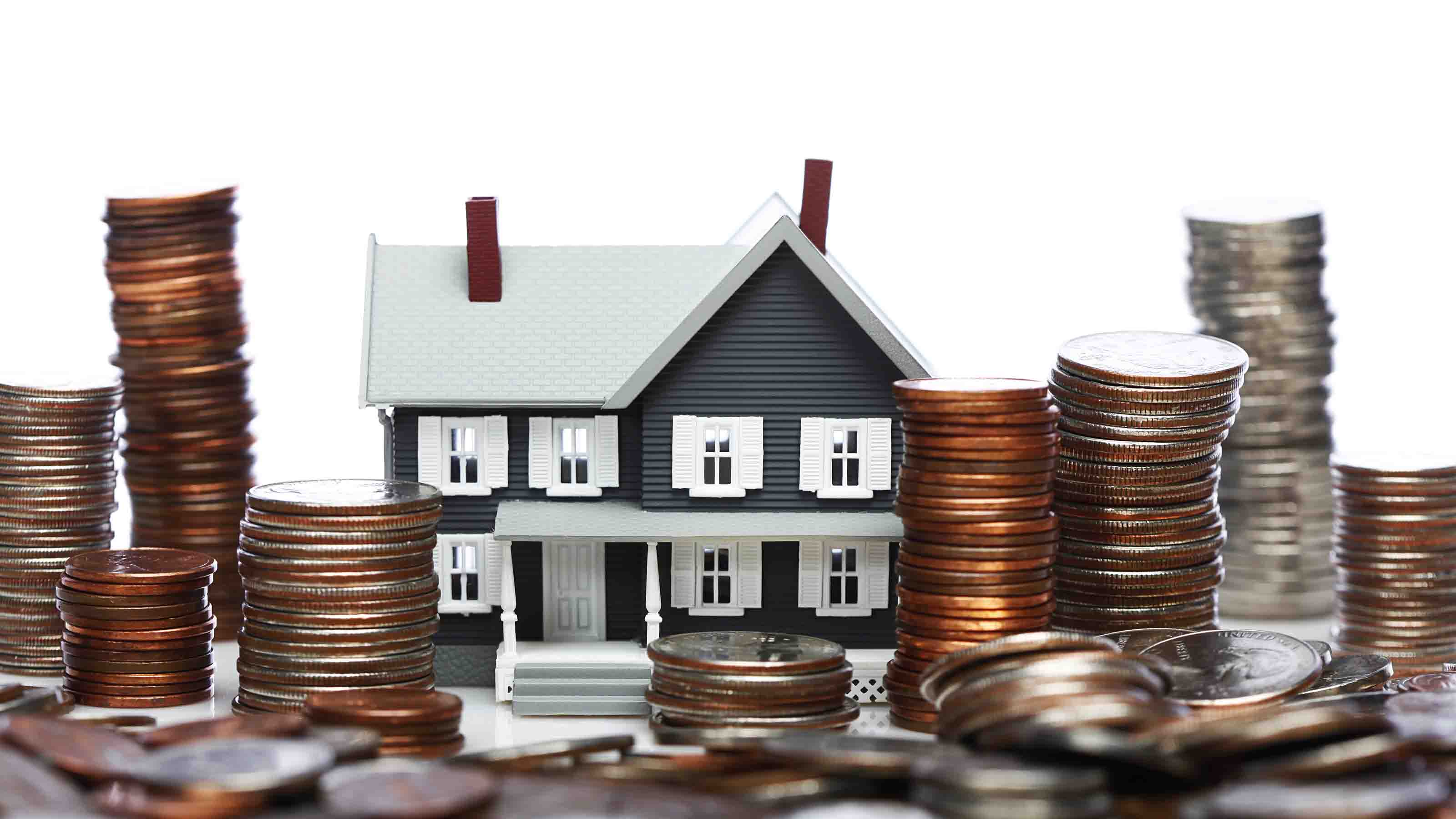Will Home Prices Hit Bottom in 2008? Yes, but . . .
A rate freeze on some subprime mortgages may prevent more foreclosures, but this real estate market won’t show improvement until 2009.

We at Kiplinger's Personal Finance magazine believe housing prices nationally will bottom out in 2008, but the recovery for housing markets will be slow. While lenders and loan servicers, the federal government and consumer credit counselors work out a plan to relieve some homeowners facing unaffordable rate adjustments on their subprime ARMs, home values continue to slide.
Just take a look at where we've been; consider Punta Gorda.
Low-key, low-rise and (prior to the housing boom) low-cost, Punta Gorda sits on Florida's west coast, halfway between Sarasota and Fort Myers. Residents love their slice of paradise. In Punta Gorda and neighboring Port Charlotte, owners of homes that back up to the canals built in the 1950s can dock their boat in their backyard and sail out to Charlotte Bay and on to the Gulf of Mexico.
From just $107.88 $24.99 for Kiplinger Personal Finance
Become a smarter, better informed investor. Subscribe from just $107.88 $24.99, plus get up to 4 Special Issues

Sign up for Kiplinger’s Free Newsletters
Profit and prosper with the best of expert advice on investing, taxes, retirement, personal finance and more - straight to your e-mail.
Profit and prosper with the best of expert advice - straight to your e-mail.
Barb Hiebner describes gathering with friends on their boats to drink "docktails" and watch the sun set over the Gulf.
| Row 0 - Cell 0 | Will the Fed Freeze Your ARM? |
| Row 1 - Cell 0 | TOOL: Home Price Declines In Your Area |
But Punta Gorda has the dubious distinction of weathering the steepest drop in median home price for the past year -- a humbling 17%, according to Fiserv Lending Solutions, a home-price research firm in Cambridge, Mass. Until about three years ago, the home-price bubble had largely bypassed the area. You could buy a typical 2,000-square-foot home on a canal, with a swimming pool, lanai and boatlift, for less than $300,000, says Hiebner, a real estate agent.
Then Hurricane Charley struck, in August 2004. In the wake of Charley's destruction, a buying frenzy ensued, as local residents sought to replace their homes and investors and builders flocked to the area in search of opportunity. New construction, especially condos, took off. Investors began to flip homes, and prices soared.
Hiebner says that just before the downturn, that "typical" house was selling for $600,000. Then the housing meltdown swept over the area, in its own way wreaking as much havoc as the hurricane.
How We Got Here
Punta Gorda represents an extreme of boom and bust, but it's hardly unique. The same forces that sank prices there struck elsewhere around the country. In the aftermath of the crash of tech stocks in 2000, investors seeking the next big thing turned to residential real estate.
They flocked to affordable markets and bid up prices. Local home buyers joined the frenzy -- first-time buyers because they feared being priced out of the market, and move-up buyers because they wanted to cash in their rising equity and buy their dream home. Easy credit -- including loans for subprime borrowers with sketchy credit histories -- fueled the fervor. In more than 40 of the 100 biggest markets, the median mortgage payment exceeded the traditional lending guideline of 28% of household income.
During the five years that ended with the second quarter of 2007, annualized price gains in more than three-fourths of those cities exceeded the historical average -- 6.6% annually since 1968, according to the National Association of Realtors (NAR). In more than half the cities, prices grew by double digits. Miami came in first, with 18%; only Warren, Mich., near Detroit, showed negative results (-0.3%), indicative of the state's troubled economy.
In stark contrast, the NAR expects the national median home price to fall by 1.5% in 2007, the first decline nationally since it began keeping records in 1968. Sales decreased throughout the past year, while the number of homes on the market increased. According to the latest numbers, the supply of single-family homes was the largest since 1988.
The downturn accelerated last summer as the subprime credit meltdown morphed into widespread credit tightening. Many no-down-payment and exotic mortgages disappeared altogether, and interest rates on jumbo mortgages (those exceeding $417,000) rose beyond the reach of many buyers. So although buyers now had the advantage, many were prevented from reentering the market or were too spooked to commit.
In the hottest markets -- California, Nevada, Florida, and to a lesser extent Washington, D.C., and parts of the Northeast -- investors and homeowners are watching helplessly as home values fall and mortgage costs rise (ARM resets will peak this spring), and they can neither sell nor refinance. Result: Foreclosures are soaring.
[page break]
Taking the Medicine
Economists generally agree that a home-price correction was necessary, noting that home prices in many markets had exceeded the limits of affordability and the strength of underlying local economies. The statistical concept of regression to the mean also guides their expectations: Simply, when prices rise too far beyond the historical average, they have to trend down.
For the past year, only five cities show appreciation of more than 6%: Albuquerque, Seattle, Nashville, Lancaster, Pa., and Knoxville, Tenn. Fiserv's chief economist, David Stiff, observes that they were late to the party and will be late to correct. The vast majority of the cities show price declines. The worst lay within the Central Valley region of California and the west coast of Florida.
Marooned in Merced, Cal.
During the boom, investors flocked to affordable markets, where they thought they could easily buy and flip properties. That's why, in this cycle, markets dominated by entry-level homes may take a bigger hit than those with higher-priced homes -- a reversal of what happened in the last housing downturn, in the early 1990s.
That's not good news for Merced, Cal., an agribusiness and warehousing center 116 miles due east of thriving San Jose. Bay Area home buyers in search of affordability discovered Merced first, followed by Bay Area investors, who came in caravans after the University of California announced that it would locate its next new campus there. Landowners, local governments and national builders got on the bandwagon, believing that when the school opened in 2004 or 2005, it would attract not only students and faculty but also ancillary services and research facilities.
Just before the campus opened in September 2005, says real estate agent Jerry Lou Davis, eight of every ten of her clients seemed to be investors. But when the university opened, the investors fled, leaving behind less-affluent local buyers.
Sales fell and prices followed. Davis counted 27 new subdivisions that opened just as the market tanked. During the past year, the median price there declined by 15% -- the fourth-worst on Fiserv's list. Investor-owners left holding the bag handed over the keys to their lenders and headed out of town. Their signature? The dead grass on the lawns of the properties for which they no longer pay the water bill. In early November, properties in some phase of foreclosure numbered 1,680, according to RealtyTrac, a foreclosure listing service.
| Row 0 - Cell 0 | Will the Fed Freeze Your ARM? |
| Row 1 - Cell 0 | TOOL: Home Price Declines In Your Area |
Over the long term, Merced will thrive, says real estate consultant Greg Pacquin. He notes that historically, the UC campuses have juiced up local economies, but it takes time. In the short run, sellers such as Robert Wendel, 57, an education administrator, and his wife, Sue, 54, a part-time teacher, say they may have to put their plans on hold.
They had hoped to relocate soon to Kansas, where they've purchased land and want to build a new home. They considered selling and moving two years ago, and the Wendels think they could have gotten $450,000 for their 20-year-old, four-bedroom, two-bath home in a desirable neighborhood. But in August they listed the house for $410,000. Now, it's down to $350,000, their agent's original suggestion.
Even at that price, only one prospect has come through the door, and he never returned. The Wendels still have some room to negotiate if a buyer shows up. They could also move and rent the home for a loss. But they may just take it off the market and wait. "We just won't make as much money as we thought," says Bob.
[page break]
Looking Ahead
Expect prices to fall another 5% nationally in 2008. The market should bottom out by midyear, but when the recovery begins, the improvement in sales and prices will be so slight as to be invisible. Home prices are sticky on the way down, as sellers hold out for as much as they can get. But they're even stickier on the way back up, as buyers resist increasing their offers.
Fiserv forecasts that more than three-fourths of the cities it follows will post negative results during 2008, with the rest posting gains of 4% or less. Its forecasting model factors in the two primary drivers of growth in any local economy: income and demographic trends. If a city is unaffordable, the model will forecast a price correction. Sometimes, however, it will do so independent of affordability.
| Row 0 - Cell 0 | Will the Fed Freeze Your ARM? |
| Row 1 - Cell 0 | TOOL: Home Price Declines In Your Area |
Las Vegas, for example, falls in the midrange of affordability (with an index of 5), but Stiff says prices are still "out of whack" based on historical norms and dwindling demand from disappearing speculators. Las Vegas home prices are expected to fall 17% in 2008, and Phoenix is close behind, with a predicted 15% drop.
Fiserv projects that over the next two years, Miami (which tops the five-year winners list) will suffer the most (down 23%), followed by Punta Gorda; Fort Walton Beach, Fla.; Phoenix; Stockton, Cal.; Fort Lauderdale, Fla.; and Las Vegas. In Los Angeles and San Francisco -- the two most expensive cities in the country -- Fiserv expects prices to lose 14% and 0.7%, respectively, by mid 2009. The city slated to do the best is Clarksville, Tenn., between Nashville and Fort Campbell, Ky., with a projected 6.4% gain through 2009.
At NAR, chief economist Lawrence Yun says that San Francisco's home prices have been unjustifiable for the past 30 years by any metrics, as have prices in London, Paris and Tokyo. "We can't explain its prices purely by income, but by some special factor," says Yun. Miami may be acquiring that certain something, too. "It's getting to be a more international, cosmopolitan resort area for which people will pay a premium."
The Bright(er) Spots
Owners who saw their home values rise during the boom, didn't over-tap their equity and do not need to sell now are still ahead and can congratulate themselves on the long-term benefits of homeownership.
Those in regions and states that missed the boom may have brighter days ahead. The Southeast, excluding Florida, has potential to fare well through the downturn -- in single, not double, digits -- with relatively affordable housing and strong local economies. Smaller southeastern cities, such as Asheville, N.C., and Lynchburg, Va., have attracted retirees and "half-backs" who have left Florida.
The housing market in Texas has been out of sync with the rest of the country since the early '80s, when oil prices tanked and home prices followed. Now, there's no economic reason to justify a price drop. Denver's housing market has been asynchronous, too.
It went flat about three years ago, at least partly because many Californians who had moved to Denver after their state went into recession in the early 1990s returned home for the boom.
Mark Zandi, chief economist of Moody's Economy.com, says that the Farm Belt (several hundred miles on either side of a straight line drawn from North Dakota through Oklahoma) should also do well. The demand for corn for ethanol and the booming exports of food have jacked up its economy.
Recession is the biggest wild card in this outlook. We think the U.S. economy will skate around the edge of it, despite events buffeting the economy through the last half of 2007.
If the economy doesn't fall into a slump, says Ed Leamer, director of the UCLA Anderson Forecast Center, it will defy history. Only twice before has a housing-market correction like this one not led into a recession -- in 1951 and 1967, when Defense Department spending for the Korean and Vietnam wars offset housing problems.
Fiserv's Stiff says downward-spiraling pessimism that scares off buyers even after affordability has returned poses the biggest risk. And he sees something new: greater spillover of negative psychology from one market to another as people have access to more information about what's happening elsewhere.
For some, the slump spells opportunity: Buyers who aren't sweating over selling first -- and who aren't intimidated by worst-case scenarios -- are finding bargains. In 2006, John Breen, 51, of suburban Boston hoped to buy a vacation home in Punta Gorda. He made an offer on a two-bedroom, two-bath condo listed for $225,000, but he and the investor-owner couldn't come to terms.
This past summer, Breen and his girlfriend, Darlene Dupre, were Internet shopping when they saw that the same unit was for sale again. This time, it was in foreclosure and listed by the bank for $155,000. Breen and Dupre bought it for $151,000 -- a delicious deal.
Profit and prosper with the best of Kiplinger's advice on investing, taxes, retirement, personal finance and much more. Delivered daily. Enter your email in the box and click Sign Me Up.

-
 Turning 59½: 5 Planning Moves Most Pre-Retirees Overlook
Turning 59½: 5 Planning Moves Most Pre-Retirees OverlookAge 59½ isn't just when you can access your retirement savings tax-free. It also signals the start of retirement planning opportunities you shouldn't miss.
-
 If Your Retirement Numbers Don't Look Good, You Have Options
If Your Retirement Numbers Don't Look Good, You Have OptionsIf you're worried about a shortfall between your income and expenses in retirement, you're not alone. But there are ways you can make up the difference.
-
 How to Make the Most of These 2 Tax Breaks ASAP
How to Make the Most of These 2 Tax Breaks ASAPTaxpayers can strategically use these temporary tax opportunities in particular to lock in long-term tax savings. Here's how.
-
 How to Search For Foreclosures Near You: Best Websites for Listings
How to Search For Foreclosures Near You: Best Websites for ListingsMaking Your Money Last Searching for a foreclosed home? These top-rated foreclosure websites — including free, paid and government options — can help you find listings near you.
-
 Luxury Home Prices Rise as the Rich Dodge High Mortgage Rates
Luxury Home Prices Rise as the Rich Dodge High Mortgage RatesLuxury home prices rose 9% to the highest third-quarter level on record, Redfin reports, growing nearly three times faster than non-luxury prices.
-
 Four Tips for Renting Out Your Home on Airbnb
Four Tips for Renting Out Your Home on Airbnbreal estate Here's what you should know before listing your home on Airbnb.
-
 5 Ways to Shop for a Low Mortgage Rate
5 Ways to Shop for a Low Mortgage RateBecoming a Homeowner Mortgage rates are high this year, but you can still find an affordable loan with these tips.
-
 Looking to Relocate? Plan for Climate Change
Looking to Relocate? Plan for Climate Changebuying a home Extreme weather events are on the rise. If you’re moving, make sure your new home is protected from climate change disasters.
-
 Retirees, A Healthy Condo Has a Flush Reserve Fund
Retirees, A Healthy Condo Has a Flush Reserve FundSmart Buying Reserve funds for a third of homeowner and condo associations have insufficient cash, experts say. Here are some cautionary steps you should take.
-
 Cash Home Buyers: New Services Offer Help Making All-Cash Offers
Cash Home Buyers: New Services Offer Help Making All-Cash OffersBecoming a Homeowner Some firms help home buyers make all-cash offers on homes. Weigh the fees before you sign on.
-
 Home Sale Prices in the 50 Largest Metro Areas
Home Sale Prices in the 50 Largest Metro AreasBecoming a Homeowner What’s happening in the market where you live?